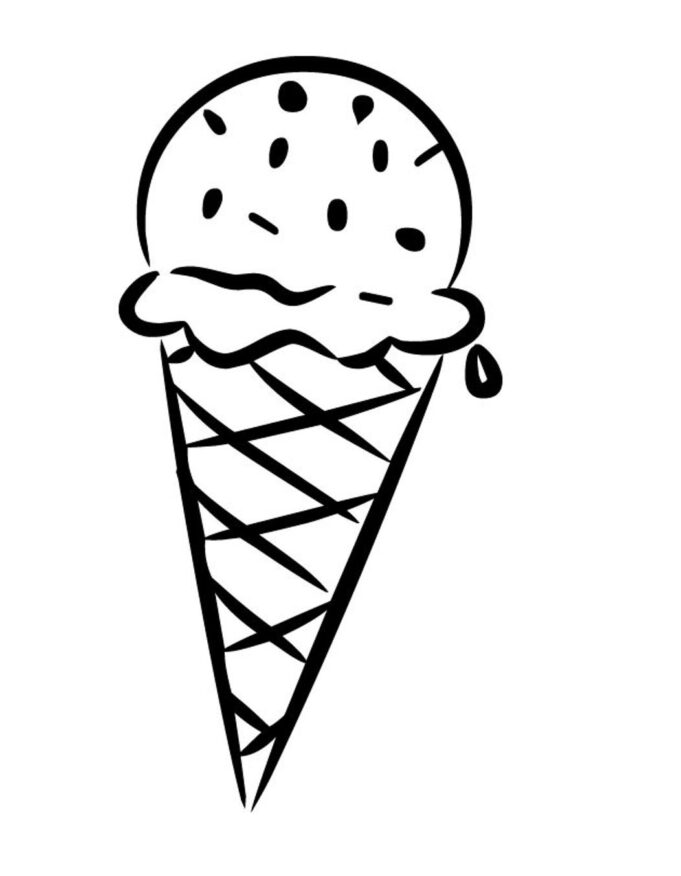Last Updated on April 20, 2024 by Saira Farman
Draw For Kids shows increased interest in drawing actual objects rather than just using a colouring book or toddler scribbles. Draw For Kids might not be ready for detailed drawings, but an ice cream cone is a simple place to start. Children can sketch an ice creams cone like a pro with a circle, a triangle, and a few lines.
Why Is Drawing Vital for Children?
Children love to draw, colour and paint. Your home is likely covered in small, sporadic drawings that you’ve made (yes, even the one that literally has one line on it). My love, kindly allows me to toss this away. No, it’s a photo of my favourite jump rope for Daddy, the child retorted.
I’m assuming that this is a topic of conversation at home. Even though there is plenty of paper available, their drawing must be encouraged for their growth. They can develop their fine motor skills by making art. It can be difficult to learn how to hold a pencil or crayon as an adult because most of us don’t recall what it was like to do so when we were children.
Easy Ice Cream Drawings for Children
Additionally, it promotes cognitive growth. Children need to be able to picture the scene they want to depict on paper before they begin drawing. Learning this ability is difficult for most people, so it must also be difficult for youngsters.
Language skills could benefit from drawing as well. Inquire about your children’s drawings. Most likely, you’ll hear the most original tales! Additionally, they will appreciate the unique focus you give them.
Children’s relationships with their loved ones may improve through drawing.
Is your little child first a bit hesitant to make friends? This can occasionally occur even if they know someone but don’t see them much. Your child may not yet feel completely at ease around their aunt or uncle because they may only visit occasionally.
Draw an Easy Ice Cream
Find a method to make the child feel at ease while attempting to incorporate them rather than pressing them to supply several solutions.
Children can connect with the people in their lives through drawing. Send the young artist’s grandmother, aunt, or uncle to visit them when they work in their preferred environment. If the adult is particularly skilled at sketching, the child will be amazed, and everyone will feel at ease.
Even if they lack artistic ability, simply sitting down and drawing with the child can make them feel less afraid. Ask the child about his or her drawing when an adult is present. Kids won’t have to endure dull questions from adults and will enjoy seeing their work on display.
If your child only communicates with their family via video chat, this might put them at odds with Aunt Lauren. These barriers can be removed by speaking via video, and connections can be facilitated. Additionally, it helps kids maintain eye contact for longer than 30 seconds, which can be challenging.
Simple Step-by-Step Directions
- A straightforward object like an ice cream cone is a great place to start if you struggle to come up with a subject for your children to draw. Most significantly, this artwork is gratifying and simple to comprehend.
- Your child should be able to draw this if they can draw simple shapes. They’ll be so pleased with themselves when they’re finished that they’ll want to brag about it to everyone they know.
- Please don’t assume that you adults are exempt from this duty. You should also be an artist! Do you recall how fantastic painting used to make you feel when you were younger? What made us stop?
- Children typically stop drawing when they observe adults stop. You might encourage them to continue developing their artistic talent after elementary school by showing them that painting isn’t just for little kids.
- Open the Caribu first, then begin. Use this wonderful step-by-step ice cream cone drawing lesson to follow these directions. While talking on the phone with grandma or even in between talks, your little artist can pick it up and try it.
- Keep in mind that no two ice cream cones are identical. Like snowflakes, they are! Don’t be concerned if it differs slightly from the example or even what the other person is sketching.







